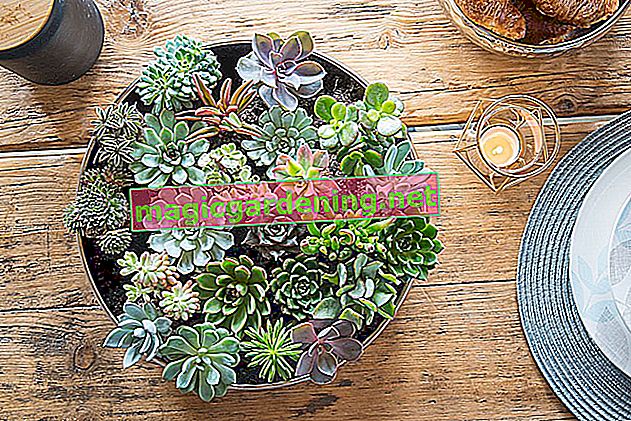
Lowering the temperature makes succulents willing to bloom - this is how it works
Cacti and other succulent species rely on a cold stimulus to create their buds. While this process occurs naturally on hardy succulents, you can help a little with your indoor plants with the following strategy:
- Relocate succulent houseplants from heated rooms from November to February
- Spend in a bright to sunny location with temperatures of 12 to 15 degrees Celsius
- Alternatively, lower the nighttime temperatures by around 5 degrees in living rooms in winter
- Water only enough so that the root ball does not dry out
- Do not fertilize from October / November to February / March
also read
- Plant and care for succulents in pots - this is how it works
- Propagating succulents by cuttings - this is how it works with children and cuttings
- It's easy to multiply succulents - this is how it works with cuttings
With the combination of a cooler location and modified care, you get succulent flowering plants in the mood for another blooming season. It is also an advantage if cacti, thick-leaf plants and other succulents can spend the summer in the fresh air on the sunny balcony. After 8 days of acclimatization in the partially shaded location, direct sunlight promotes flower induction.
Tips
Winter-blooming succulents, such as the wonderful poinsettia, stop growing in spring. So that the magical blooms can unfold again in the coming Advent, place the popular houseplant in a cool location with 15 to 17 degrees Celsius for 4 to 6 weeks. Then pot the succulent blooms in fresh soil and place them in a sunny window seat at 20 to 24 degrees.








